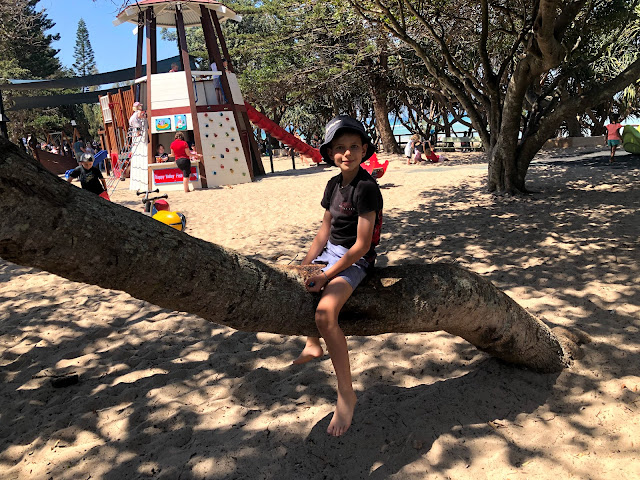Jimmy Crow of Crow's Nest, Queensland
Crow, Jim (c. 1825—c. 1884)
by C M Wormington
Jim
‘Jimmy’ Crow (c. 1825—c. 1884), camp operator and Indigenous guide, was born in
the 1820s, in the Darling Downs, Queensland (Kerkhove 2020). His exact birth
and death dates remain unknown and, in addition, it is unclear whether Crow's
surname was associated with his crow-like appearance or his moiety (Kerkhove
2020); in fact, many aspects of Crow's early life are disputed. This can most
likely be attributed to his younger years having occurred in early Aboriginal
times. Written history from these times is ‘…almost non-existent’ (McGreevy
2003, para. 1) and, because of this, there is a large gap in the documented
facts of Crow’s life. This gap ranges from his birth, up until approximately
his early 20s.
Popular belief holds that the entire name ‘Jim Crow’ was given to him by the early settlers (Watson 2020), with his traditional birth name remaining a mystery; however, Kerkhove (2020) did not acknowledge this theory in his account of Crow’s life. This is noteworthy because Kerkhove (2020) relied on personal communication with Aboriginal History educator, Madonna Thompson (Nyanda 2020), as well as Wakka Wakka elder, Adrian Beattie (Morris 2020). ‘In the Aboriginal world view, knowledge is an extension of the cosmic order and comprises the accumulated wisdom of the group since time immemorial, handed down from generation to generation by word of mouth’ (Gostin & Chong 2019, p. 147), meaning Indigenous knowledge of Crow’s life is arguably the most reliable.
Many
Indigenous families have traced their lineage back to Jim Crow of Crow’s Nest,
Queensland (Kerkhove 2020). This
suggests that, regardless of the origins of Crow’s name, it remains what he was
known as, in Indigenous and Caucasian history alike. This lineage tracing also
indicates that Crow likely had a child or children and, while Kerkhove (2020) asserts
that a younger ‘Jim Crow’ in the area may have been Crow’s son, no definitive written
history exists regarding Crow’s offspring, including at what age and with whom, he may have fathered
them.
The
early settlers named the Jarowair land on which Crow
resided after him and the name ‘Crow’s Nest’ first appeared on maps in 1848
(Kerkhove 2020). Crow would have been
approximately 23 years old at that time.
The latter part of the name, ‘Crow’s Nest’ was thought to be derived from the innovative home
Crow had built for himself within an enormous hollowed out tree stump (Rehn
2019). This home, which is said to have
been situated near a waterhole, on a customary Aboriginal camping site, was the
first fixed dwelling in the region (Kerkhove 2020). It contained a pantry, a
large bush kitchen and even a fireplace (Kerkhove 2020)!
Having lived in the area for the entirety of his life, Crow knew the land well and possessed the capabilities and skills of an exceptional tracker (Watson 2020). He used this knowledge to assist teamsters and early settlers with information and directions, becoming well known for providing weary bullock drivers with food and an overnight resting place at his campground (McGreevy 2003).
Crow
adapted well to the new environment which came with the European settlers and
was friendly and well respected, assisting them in coming to understand
Australian land and how best to cultivate it (Gibson & Besley 2004, p. 44). It was not unusual for
Aboriginal men in the Crow’s Nest area to work on local bullock and
timber-getting teams, so there is a strong possibility that Crow may also have
worked on these teams at some point in his life (Kerkhove 2020).
Jim ‘Jimmy’ Crow is thought to have died sometime after 1800, likely around the year 1884 but facts about his later life remain as scarce as those of his early years. What is known is difficult to accurately decipher, owing partially to the commonality and derogatory use of Crow’s name (Kerkhove 2020). For example, it has been suggested that Jim Crow could have been one and the same as ‘King Jimmy’ who wore a breastplate and was well known in the Crow’s Nest Shire before his death in 1884. ‘King Jimmy’ died in Toowoomba Hospital from either a fall or a fighting injury (Kerkhove 2020).
Crow
is remembered by his Aboriginal descendants as an influencer of the European
settlement of their homeland, empowered to exercise this influence by remaining
in the same camp throughout the entirety of his life (Kerkhove 2020).
*
On
12th July 1969, a life-size statue of ‘Jimmy Crow’, sculpted by Mr
Fred Gardiner of the Tia Art Gallery, was unveiled in the town square of
Crow’s Nest. Weighing over a tonne and standing at 6 foot and 6 inches
in height, Gardiner crafted the statue of Crow from a block of Helidon
freestone. This monument is the only memorial in Australia,
honouring an Aboriginal man with a town named after him (Watson 2020). While
some citizens still purport the legend of Jim Crow as mere folklore and the statue, a
generalised representation of the Aboriginal people as a whole (Gibson & Besley, p.
44), the evidence clearly indicates that, while details of Crow’s life are admittedly vague,
he certainly did exist.
Crow’s statue is situated in front of a
replica of his home (Gibson & Besley 2004, p. 44). This 18-foot hollow tree stump was moved from
a local forest, by a team of volunteers who then planted a fig tree on top to
create a 'living' hollow tree (Watson 2020).
The replica of Crow’s home is emblazoned with a plaque which reads:
"In the early days when teamsters visited this area, ‘Jimmy Crow’, an Aboriginal named by the early settlers who used a large hollow tree as his gunyah, was relied on for information and directions. This place was used as a camping place by teamsters and travellers and became known as ‘Jimmy Crow’s nest’—hence the name Crow’s Nest"
(Gibson & Besley 2004,
p. 43)
*
In 2019 on the 19th of October, the story of Jim Crow inspired the placement of a "Look to the Stars" plaque, located in front of the Crow’s Nest police station. Crow’s home was situated near the land on which the police station was built and thus, local officers felt it fitting this plaque, which acknowledges First Nations people as the true custodians of the land, should be placed there. It was fixed to a large rock which had been kindly donated by Range Rock Supplies (Rehn 2019). 136 years on from his death, Jim Crow’s resilience throughout the adversity of the European settlement, continues to play a pivotal role in the reconciliation process in the Darling Downs region today.
References
Gibson,
L & Besley, J 2004, Monumental Queensland: Signposts on a cultural
landscape, ResearchGate, University of Leicester, Leicestershire, United
Kingdom, viewed 5 August 2020, <https://www.researchgate.net/publication/27247617_Monumental_Queensland_Signposts_on_a_cultural_landscape>.
Gostin, O & Chong, A 2019, ‘Living wisdom: Aborigines and the environment’, in C Bourke, E Bourke & B Edwards (ed.), Aboriginal Australia, 2nd edn, University of Queensland Press, St Lucia, Queensland, pp. 147-148.
Kerkhove,
R 2020, Crow, Jim (c. 1825—c. 1884), Australian Dictionary of Biography,
National Centre of Biography, Australian National University, viewed 7 August
2020, <http://adb.anu.edu.au/biography/crow-jim-29715>.
McGreevy, M 2003, Some early history
of the Crow’s Nest district, Crow’s Nest Shire District Libraries, Crow’s Nest, Queensland, viewed 22 July
2020, <http://www.storytell.com.au/High_Site/history.htm>.
Morris,
N 2020, Old tapes reveal stockman Harry ‘Bunda’ Darlow’s life on the Darling
Downs after frontier wars, ABC News, Southern Queensland, viewed 7 August
2020, <https://www.abc.net.au/news/2020-08-04/old-tapes-unearth-aboriginal-history-of-jimbour-station/12454214>.
Nyanda
2020, Aboriginal cultural tours & bush food experience, Nyanda,
Nudgee, Brisbane, Queensland, viewed 7 August 2020, <http://www.nyandaculturaltours.com.au/about-us/>.
Rehn,
T 2019, Plaque acknowledges Crow’s Nest traditional owners, myPolice,
Darling Downs, Queensland, viewed 5 August 2020, <http://www.mypolice.qld.gov.au/darlingdowns/2019/10/21/plaque-acknowledges-crows-nest-traditional-owners/>.
Watson,
D 2020, Jimmy Crow, Monument Australia, Halifax, Queensland, viewed
15 July 2020,
<http://www.monumentaustralia.org.au/themes/people/indigenous/display/91249-jimmy-crow>.
google.com, pub-5896944412523933, DIRECT, f08c47fec0942fa0










Comments
Post a Comment